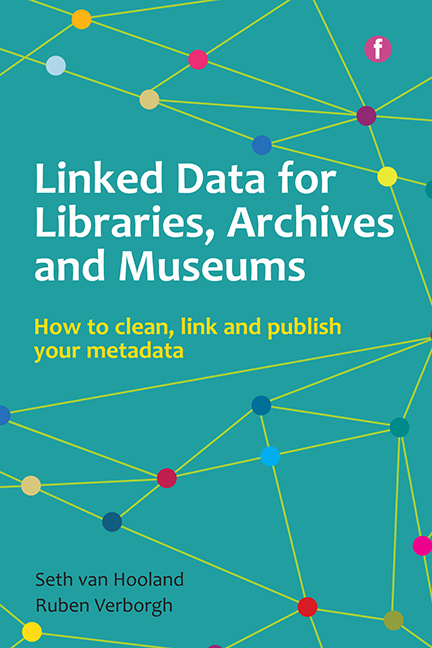1 - Introduction
Published online by Cambridge University Press: 10 September 2022
Summary
Metadata at the crossroads
While working with metadata practitioners and students over recent years, we often sensed a frustration. Linked data holds the promise to create meaningful links between objects of disparate collections, but the actual implementation tends to be quite complex. According to academics and consultants, RDF triple stores and SPARQL endpoints should bring us a brave new world in which everything is connected in a meaningful manner. Unfortunately, the reality proves to be quite complex and even outright messy. The search for the Holy Grail of data integration can turn into a nightmare, in a world where anyone can state anything about anything. Linked data: the kingdom of structured data to come or an irritating buzzword which we all will have forgotten in a few years?
The ambition of this handbook is to bring a sense of pragmatism to the debate. We will point out the low-hanging fruit currently available, but also identify potential issues and areas where it is uncertain that investments in linked data will deliver benefits. Besides avoiding an uncritical promotion of a hyped technology, the originality of this handbook lies in the positioning of linked data within the broader context of how metadata practices have evolved over the last decades. As many of you may have noticed, the term ‘metadata architect’ has started to appear on business cards and job descriptions. It is interesting to observe trends in the labelling of professional activities, especially in fields such as information science, which tend to be considered as arcane by the general public. This job title reflects the enthusiasm of the late 1990s and 2000s for the development of metadata standards, application profiles and metadata mappings. The use of the term ‘architect’ illustrates an almost utopian belief in the design of a global and coherent information architecture which can be implemented consistently across an organization.
Most of us know that the term ‘metadata architect’ rarely matches the reality. ‘Digital landfill manager’ sounds less glamorous but reflects the job content more adequately. The implementation of successive technologies over decades has scattered the metadata of our libraries, archives and museums across multiple databases, spreadsheets and even unstructured word processing documents.
- Type
- Chapter
- Information
- Linked Data for Libraries, Archives and MuseumsHow to clean, Link and Publish your Metadata, pp. 1 - 10Publisher: FacetPrint publication year: 2015



